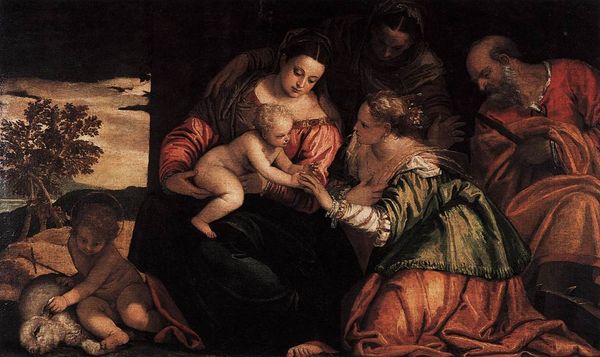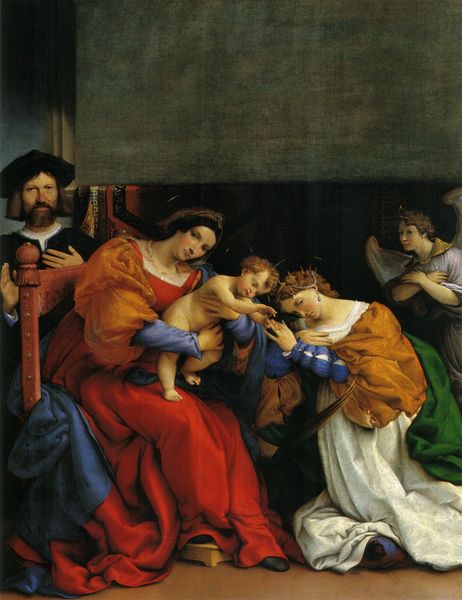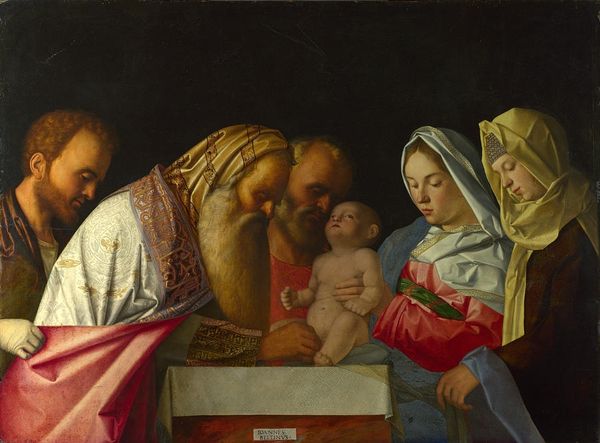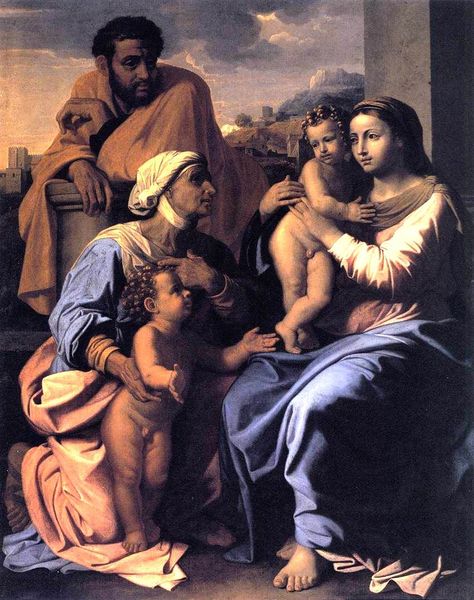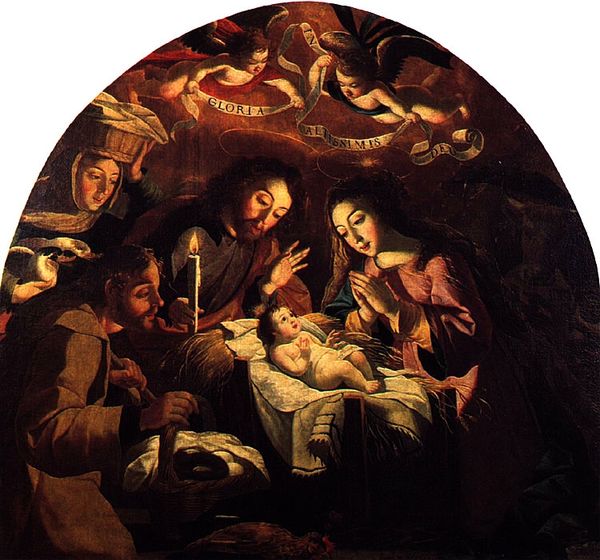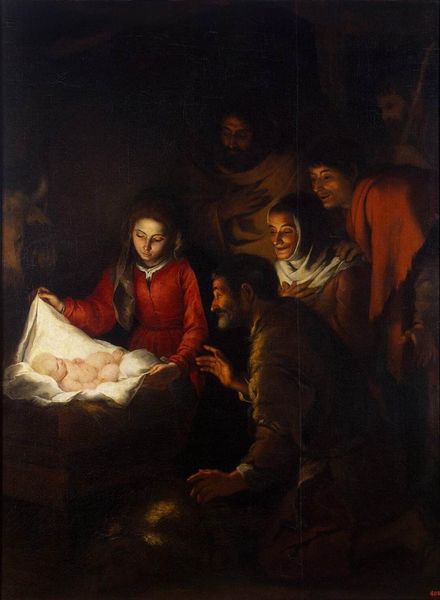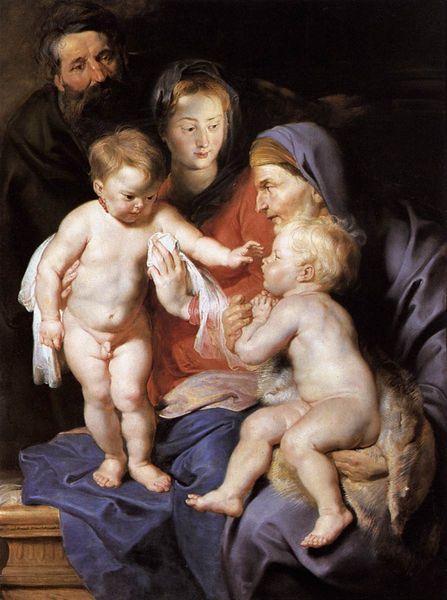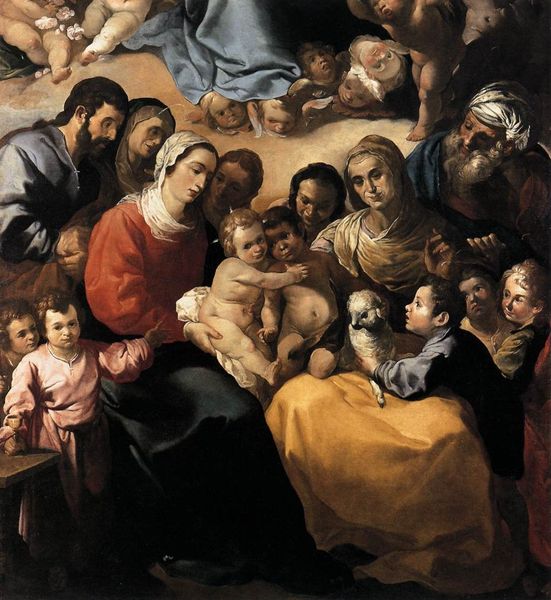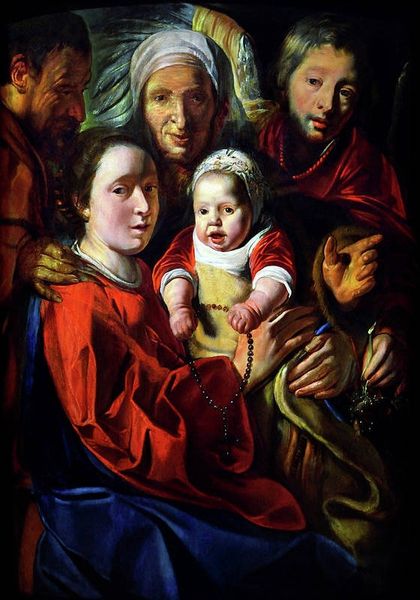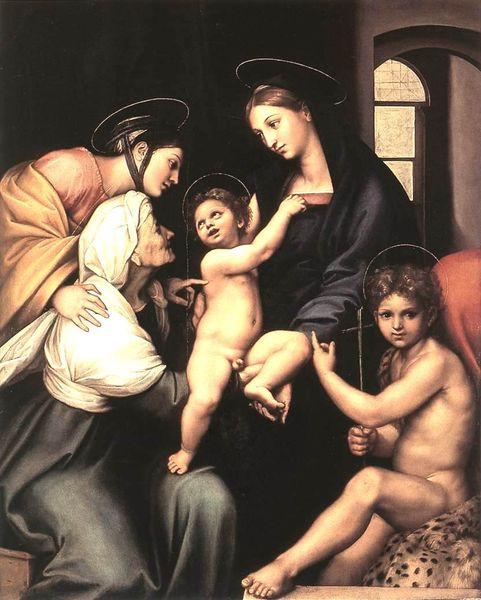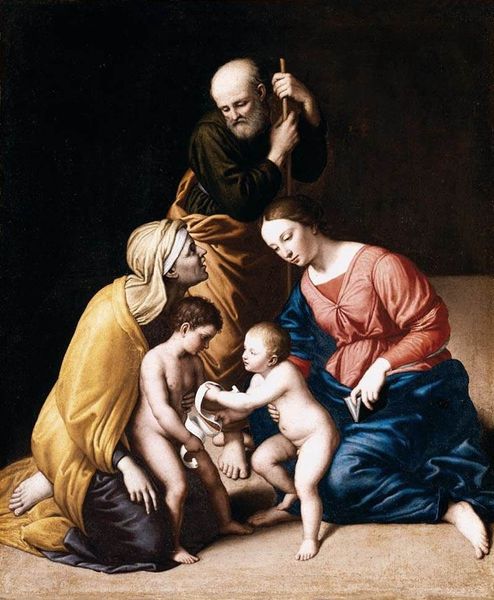
painting, oil-paint
#
baroque
#
painting
#
oil-paint
#
figuration
#
chiaroscuro
#
genre-painting
#
history-painting
Dimensions: 131 x 107 cm
Copyright: Public domain
Curator: Here we have Georges de la Tour’s “Adoration of the Shepherds,” painted around 1644. It’s an oil on canvas and currently resides in the Louvre. Editor: Striking. The deep blacks really command your attention. It’s almost a study in contrasting light, isn't it? Curator: Indeed. La Tour masterfully uses chiaroscuro. The single candle creates a strong directional light, emphasizing the figures and their gestures. Note how the artist positions each subject with direct proximity to the emanating light source. Editor: And the figures themselves...they have a stillness, almost a monumentality despite the intimate setting. They really communicate solemn reverence for the baby Jesus. The lighting enhances that feeling. Candlelight, of course, symbolizing enlightenment and the divine presence entering the world. It is all rather Baroque in its emotional intensity. Curator: Precisely. The composition is quite stable and balanced, forming a pyramid of figures around the central infant. The light's fall helps draw focus to that pyramidal form which lends an ordered structure and calm contemplation of the figures. The limited palette strengthens the formal geometry of the scene, giving each figure clear volume, further lending to that still, monumentality you mentioned. Editor: Right. But look also at their faces—they're peasant types, weathered and worn. La Tour isn't idealizing anyone here. Instead, he's bringing the sacred down to earth, depicting something almost familiar, like the presence of Christ amidst the everyman. Their inclusion itself communicates so much to the viewer. The humble and the meek in witness of this miracle. Curator: It’s interesting that he refrains from opulent detail and uses simple, geometric forms and modest colors to communicate this scene of profound religious significance. A compositional analysis reveals an image not defined by any extraneous detail. Editor: It makes it universal, doesn't it? The bare essentials, illuminating not just a physical space, but the shared humanity of that instant in the stable so many years ago. Curator: It is certainly an important consideration of form. Thank you. Editor: And a moving engagement of imagery and its deep human resonance, as always.
Comments
No comments
Be the first to comment and join the conversation on the ultimate creative platform.
